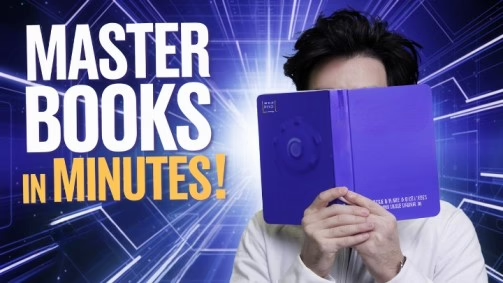Ever wondered how to master any textbook without endless re-reads and all-nighters? If you’ve ever flipped pages aimlessly or crammed facts only to forget them by exam day, you’re not alone. Traditional methods like the SQ3R method( “Survey, Question, Read, Recite, Review”) offer structure but can leave gaps in comprehension and long-term retention. Enter the Soak-Scan-Slot-Store framework—a dynamic twist on active reading strategies that turbocharges your textbook study techniques and transforms passive reading into sponge-style absorption.
Why Master Any Textbook With a New Method?
Before diving in, let’s compare the tried-and-true SQ3R with our four-phase approach:
| Feature | SQ3R | Soak-Scan-Slot-Store |
|---|---|---|
| Preview Time | 5–10 minutes (survey headings, visuals, questions) in.nau.edu | 5 minutes (Soak) + 5 minutes (Scan) |
| Active Questioning | Turn headings into questions (Question) | Embedded in Scan & Slot |
| Note-Taking Emphasis | Recite & Review cycles | Dedicated “Store” phase with templates |
| Flexibility | Linear steps may feel rigid Academic Success Center | Iterative, customizable per chapter difficulty |
| Retention Boost | Recitation & spaced review | Cognitive offload + relevance framing |
The Soak-Scan-Slot-Store method keeps the best study techniques for textbooks while addressing pain points like cognitive overload and misaligned focus.
Part 1: Soak — Build Your Textbook Roadmap
(how to read a textbook effectively)
- Flip Through Quickly (2–3 min):
- Scan pages, note chapter sections, charts, and call-outs.
- Purpose: Prime your brain’s “reticular activating system” so nothing feels alien.
- Preview End-of-Chapter Questions (1–2 min):
- Read questions to know exactly what you’ll need to master.
- Aligns with active reading strategies that drive comprehension.
- Skim Bold Text & Headings (2–3 min):
- Identify key concepts and terminology.
- Forms a skeletal outline, so when you dive deeper you’re guided by the author’s hierarchy.
- Topic-Sentence Sprint (2–3 min):
- Read first and last sentences of paragraphs for sectional overviews.
- Works because many paragraphs “front-load” and “back-load” their main ideas.
Benefit: By the end of “Soak,” you have a mental roadmap, a purpose for reading, and clarity on what to focus on.
Part 2: Scan — Targeted Deep Dive
(textbook reading strategies & comprehension tips)
With your roadmap set, it’s time to scan:
- Layering Your Learning:
- Tackle the 2–3 most familiar or relevant sections first.
- Skip ultra-dense bits initially—flag them for later.
- Layman’s Rewrite:
- For 5–7 key terms, rewrite definitions in plain English.
- Use AI tools or your own words to solidify familiarity and boost understanding Wikipedia.
- Relevance Framing:
- Ask “Why do I need this?” and “How will I apply it?”
- Jot down real-world applications or potential test questions before reading details.
- Cognitive Offload (Real Estate):
- Set up structured notes, mind maps, or bullet templates.
- Free your working memory to focus on comprehension rather than memorization Learning Center.
Output: You’ll finish “Scan” with clarified terms, prioritized sections, and a customized note framework—ready for full reading.
Part 3: Slot — Organize & Connect
(textbook note-taking methods & summarization techniques)
Now merge your roadmap and scanned insights:
- Create a Concept Slot Table to slot each key idea into:
- Definition | Example | Application | Questions
- Mind-Mapping for Connections:
- Visually link related concepts across sections.
- Slot in Summaries:
- After reading each subsection, write a 1–2 sentence summary in your own words.
This phase transforms fragmented knowledge into an interconnected web, enhancing both textbook comprehension and recall.
Part 4: Store — Reinforce & Retain
(textbook review methods & self-testing strategies)
- Deep Read & Note-Taking (30–45 min):
- Read every paragraph now that your map and frames are in place.
- Continuously integrate layman’s explainers and offload reflections.
- Spaced Review & Self-Quiz (within 24 hrs):
- Attempt end-of-chapter questions without notes.
- Revisit gaps using your “Slot” summaries and mind map.
- Embed spaced repetition to combat forgetting curves.
- Annotation & Highlighting Tips:
- Use margin icons (e.g., ⭐ for core concepts, ❓for queries).
- Keep highlights to < 1 line per paragraph to avoid “highlight overload.”
By consciously cycling through “Store,” you lock content into long-term memory—no more last-minute cramming.
Comparison with SQ3R and Other Active Reading Strategies
| Method | Preview Phase | Active Engagement | Review Strategy |
|---|---|---|---|
| SQ3R | Survey headings & visuals Academic Success Center | Question & Recite | Review step |
| PQRST | Preview, Question | Read, State, Test | Transfer |
| Soak-Scan-Slot-Store | Soak (flip & scan Q’s) | Scan (layman’s, framing) | Store (self-quiz, spaced) |
Each method has merit, but Soak-Scan-Slot-Store integrates the strongest elements (preview, targeted questioning, cognitive offload, retrieval practice) into a seamless workflow tailored for modern learners.
Implementing Your Textbook Study Schedule
- Weekly Plan:
- Monday: Soak + Scan Chapters 1–2
- Wednesday: Slot & Store Chapters 1–2 + Self-Quiz
- Friday: Soak + Scan Chapters 3–4
- Monthly Review:
- Revisit mind maps and slot tables.
- Teach concepts to peers or in a study group.
Pair these with effective study methods like the Pomodoro Technique (25/5 min cycles) to maintain focus.
Conclusion
By adopting the Soak-Scan-Slot-Store method, you’ll no longer dread heavy textbooks. You’ll know how to learn from textbooks efficiently, apply active reading strategies, and retain information long after the exam. Ready to transform your study game?
Try the Soak-Scan-Slot-Store method on your next chapter, then share your experience in the comments below! Don’t forget to check our other articles.
- Comprehensive SQ3R guide: Wikipedia – SQ3R Wikipedia
- Active reading tips: UNC Learning Center – Reading Textbooks Effectively Learning Center
- Academic Success Center: NAU – SQ3R Reading Method in.nau.edu



